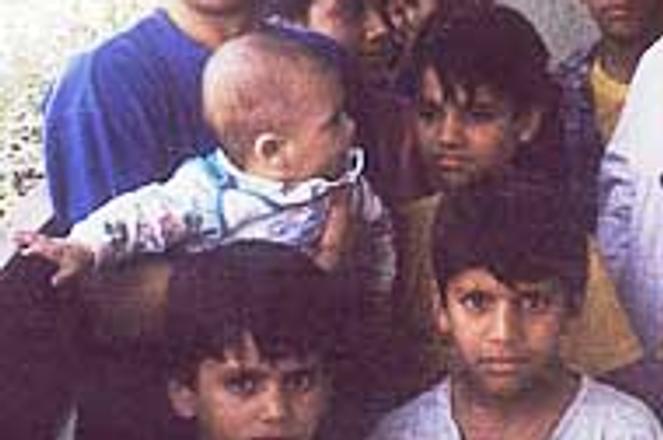AFGHAN migrant Arsalan and his family are considering their next move.photo: Peter Barecz
GABČÍKOVO: ARSALAN, a 36-year-old Afghan singer, and his family of nine children requested asylum in Slovakia six months ago, after three months of travelling across Asia and eastern Europe in tough conditions and cold weather.
"The guides we hired to smuggle us through dropped us off somewhere in Slovakia at night and said all we had to do was follow a light in the darkness for 10 minutes to the nearest police station and ask for asylum. But it took us all night to reach the nearest village," he said.
Today housed in a refugee camp in southern Slovakia's Gabčíkovo, near the Hungarian border, the family say they are enjoying Slovakia, although they will not say if the country is their final destination.
Although Arsalan will not reveal if he intends to move on to western Europe, local migration officials have become accustomed to the vast majority of asylum seekers in Slovakia eventually leaving internment camps and heading to the wealthier nations of western Europe and Scandinavia.
Migration Office statistics show that 8,151 people claimed asylum in Slovakia last year, all but 251 of whom left before asylum decisions were delivered. Nothing has changed in the first four months of this year: Of 2,358 registered asylum seekers, 2,000 have fled already.
Since the US-led war on the Taliban and Al Qaida forces in Afghanistan began last year, movements of migrants across Asia to the west have been tracked by security services fearing that terrorists may infiltrate bands of refugees to regroup and attack new targets.
A story published May 22 in the German paper Frankfurter Allgemeine Zeitung which alleged that a group of 30 terrorists had escaped a Slovak refugee camp for the west (see story front page) has raised fears that Slovakia has become part of a migration route for Al Qaida members.
But Slovak officials say international human rights agreements, and particularly the 1951 Geneva convention on the protection of refugees, do not allow asylum seekers to be locked up on the suspicion that terrorists may be among them.
The Migration Office's statistics show that majority of people seeking asylum in Slovakia are from Afghanistan - 860 this year and 4,315 in 2001 - followed by refugees from India, Iraq and Bangladesh. But no matter what their country of origin, the basic human rights of all refugees must be respected, the office says.
At the Gabčíkovo camp, two guards ensure discipline, but refugees can come and go at any time.
Refugees can attend Slovak language classes twice a week, while parents like Arsalan can send their children to a special school in the camp or to a kindergarten for small children. They have meals served three times a day and receive a little pocket money.
The nearby Brezová pod Bradlom refugee camp operates under similar rules, as do other camps in Rohovce and Adamov, which serve as temporary stations housing freshly-arrived refugees for an initial quarantine period of 30 days.
"We take care of refugees and try to convince them not to leave the camps and drop their asylum procedures, but most of them do so anyway. For them, Slovakia is a transit country, and they're usually heading to Germany, Britain or Scandinavia," said Migration Office head Bernard Priecel.
"Escapes are a normal occurrence. The Migration Office is not a police body," he added.
The director of the Gabčíkovo camp, Inocent Dračka, told The Slovak Spectator that 50 per cent of the refugees housed at his camp escaped.
"They usually stay for a couple of weeks to recover from their long journey here. Then they pack their luggage and leave," he said.
Dračka explained that around two-thirds of refugees in his camp had mobile phones, making it relatively easy for them to contact people smugglers and continue on their journeys westwards.
Although Slovakia's Border and Aliens Police has increased its co-operation with the camps to prevent the exodus, police said it was very difficult to catch asylum seekers once they escaped.
"Refugees leave at lunch and we find out in the evening or next morning that they haven't returned to the camp. They know very well that they are close to the border. They can get to the Czech Republic or Hungary practically within the time it takes to smoke one cigarette," said Igor Raninec, head of the illegal migration section with the Border and Aliens Police.
The Bratislava office of the United Nations Commissioner for Refugees has in the past called for Slovakia to build an internment camp next to its Ukraine border, rather than minutes from western borders where most of them are located.
Priecel added that despite potential concerns over refugee links to terrorist groups, the vast majority were people fleeing danger, poverty and oppression.
"They're just travelling to find a place where they can live better lives because they can't do it in their home countries," Priecel said.


